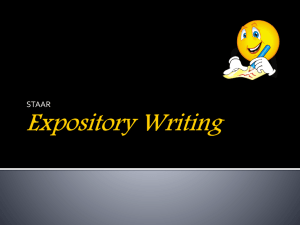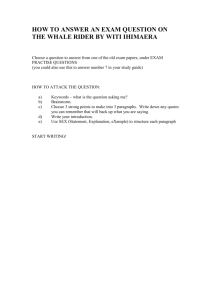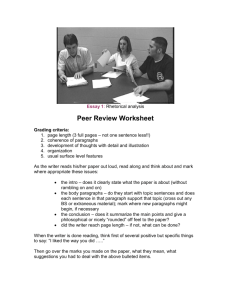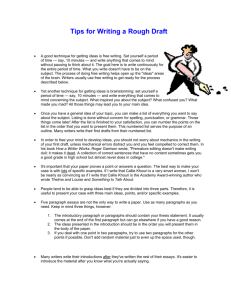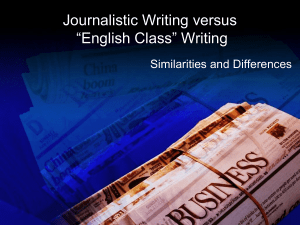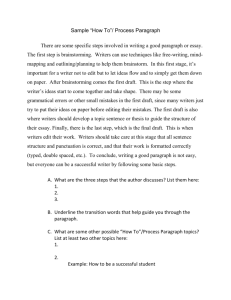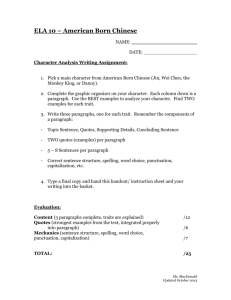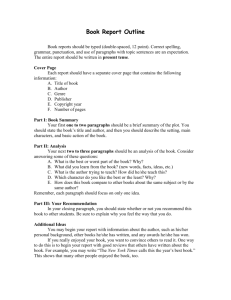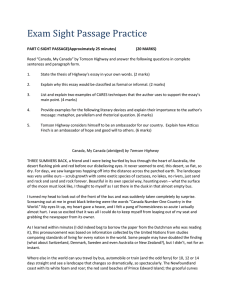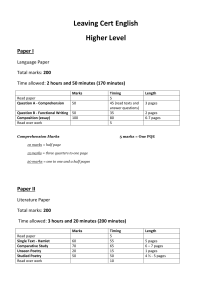Unit 1 Higher revision
advertisement
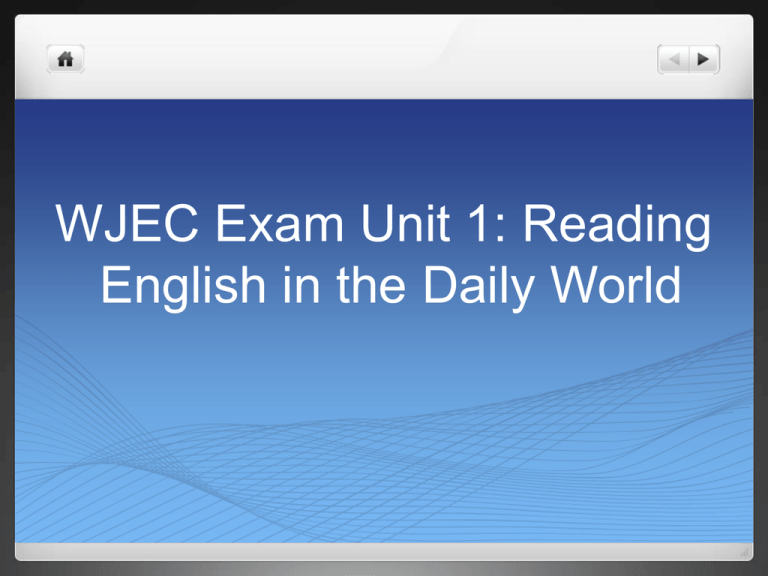
WJEC Exam Unit 1: Reading English in the Daily World What’s the exam about? You have to read 2 non-fiction texts: about real life. You have to answer four questions, worth 10 marks each. 3 of the questions usually ask ‘What?’ ; ‘Why?’ and ‘How?’ The last question asks you to compare (look for things that are similar) and contrast (look for things that are different) the two articles. You have to show the examiner that you understand the texts and the writer’s ideas. You also need to show how he uses language and structure to get his message across to the reader. How do I know how much to write? You have one hour to finish the exam. You have 15 minutes for each question (4 questions). Each question is worth 10 marks. For each question, make five points (2 marks each). Move off a question when 15 minutes is up – even if you haven’t finished the answer. What do I do when I am told to open the exam paper and begin? Write the time you have to finish each question on the exam paper beside the number of the question eg 9.15; 9.30; 9.45; 10.00. Read the questions on the first text. Read the first text. Keep glancing at the questions to remind you what you are being asked to do. This will help your brain to search for the information in the text as you read. Go back to the first question. Skim read the text, looking for information that will help you to answer it. Underline 5 key words or phrases – one for each point. Answer the question (see next slide). Do the same for Questions 2 and 3. How do I set out my answer to Question 1? Turn each question into a statement then: Underline the text, with the question in mind Annotate the text with a brief explanation for each underline. Write your response in short paragraphs that should be a combination of QUOTES from the text and EXPLANATIONS of how the quotes answer the question. What about the other questions? Questions 2 and 3 should be set out as paragraph. Make 5 points in each answer, like you did in Question 1. Question 2/3 will usually be about how the writer makes an impression on the reader. The exam paper will give you some help by saying that you should ‘Think about’ certain things such as What she says How she says it The use of headlines and pictures The use of internet features. Write about all of them – using your own topic sentence to cover each area and then add your PEEs up to five short paragraphs in total. What about the other questions? Question 3 is about the second reading text . Question 2/3 will usually be about what are the writers views. This question expects you to summarise the key points the writer makes, and show you understand what they are trying to say. You do not need to PEE on a ‘what’ question Instead, try to use a mixture of your words and the writers to identify the key points. You must use speech marks if you use short quotes, to show you know when the words are yours or the writers. Make sure you stick to answering the question, and try to write a sentence to summarise each important paragraph. What about Question 4? Question 4 is a compare and contrast question where you have to say what is similar about the two articles (compare) and what is different (contrast) about them. BE CAREFUL! Often the question tells you EXACTLY how to layout your answer Unless the exam paper tells you what you should write about, write two paragraphs. One paragraph should be about the similarities and the other should be about the differences. You should refer to the texts to give examples and use some quotations. I’ve finished in time! Great – well done! Now read through your answers, looking for spelling and punctuation mistakes and grammar errors. Correct where necessary, making sure that the examiner can read your corrections.
